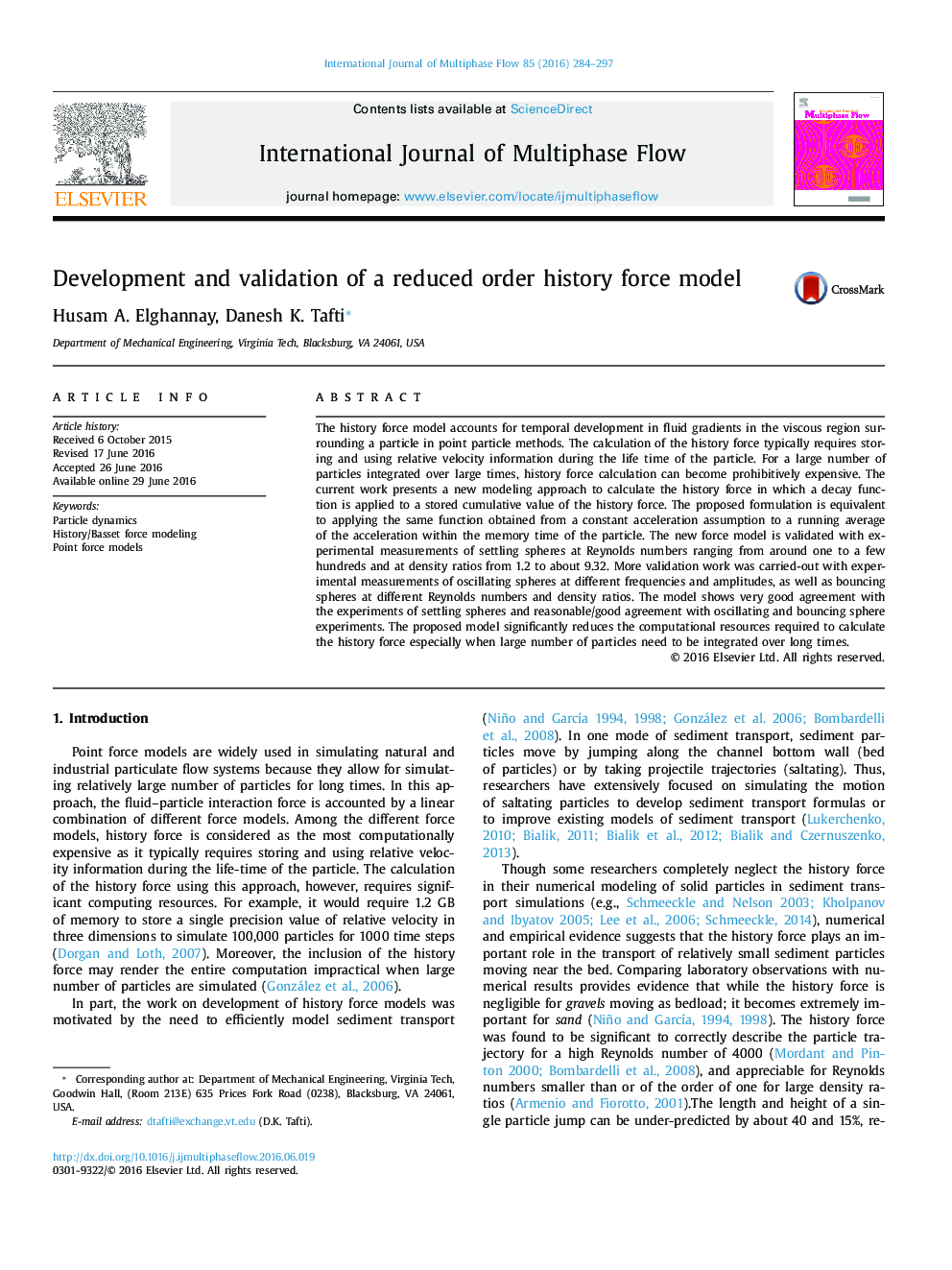| Article ID | Journal | Published Year | Pages | File Type |
|---|---|---|---|---|
| 7060244 | International Journal of Multiphase Flow | 2016 | 14 Pages |
Abstract
The history force model accounts for temporal development in fluid gradients in the viscous region surrounding a particle in point particle methods. The calculation of the history force typically requires storing and using relative velocity information during the life time of the particle. For a large number of particles integrated over large times, history force calculation can become prohibitively expensive. The current work presents a new modeling approach to calculate the history force in which a decay function is applied to a stored cumulative value of the history force. The proposed formulation is equivalent to applying the same function obtained from a constant acceleration assumption to a running average of the acceleration within the memory time of the particle. The new force model is validated with experimental measurements of settling spheres at Reynolds numbers ranging from around one to a few hundreds and at density ratios from 1.2 to about 9.32. More validation work was carried-out with experimental measurements of oscillating spheres at different frequencies and amplitudes, as well as bouncing spheres at different Reynolds numbers and density ratios. The model shows very good agreement with the experiments of settling spheres and reasonable/good agreement with oscillating and bouncing sphere experiments. The proposed model significantly reduces the computational resources required to calculate the history force especially when large number of particles need to be integrated over long times.
Keywords
Related Topics
Physical Sciences and Engineering
Chemical Engineering
Fluid Flow and Transfer Processes
Authors
Husam A. Elghannay, Danesh K. Tafti,
